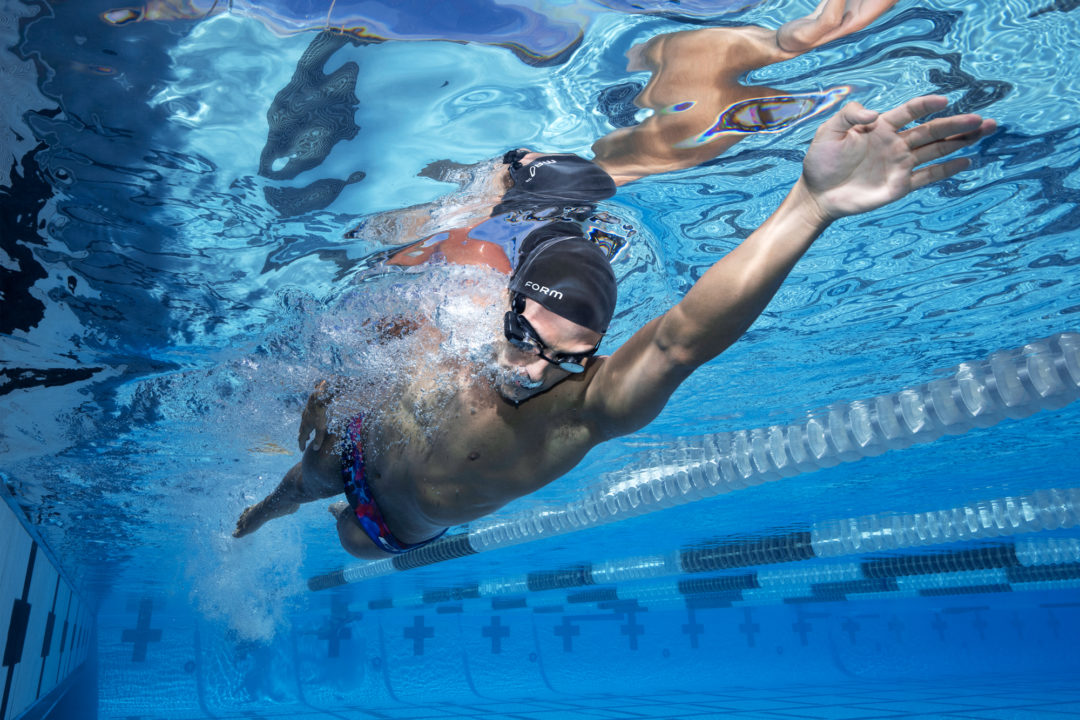As swimmers, we do a lot of heart rate training, but it has always been based on feel or the outdated, and inaccurate, ‘two fingers to your neck’ technique at the wall.
We hope we’re in the right zone, but it’s guesswork. We know it’s important, but do we understand why?
“I’ll be honest, I had no idea how little I knew about heart rate until I saw it as a live number during my swim,” two-time Olympian Scott Dickens admits.
Before FORM partnered with Polar® to bring live heart rate to the pool last year, precisely measuring your effort during a swim was a real challenge.
Scott, Director of Strategic Partnerships at FORM, describes the first time swimming with live HR as a real ‘ah ha’ moment.
“It blew my mind. To get that instant feedback, in the moment, was crazy to me. Getting your heart rate at the wall versus while you swim is night and day.”

“I was shocked at how much harder it was to get my heart rate up in the pool to begin with. But the biggest shock came when I felt like I was pushing myself harder and feeling that effort all over my body, but saw my heart rate dropping.”
“That’s when the benefit of real-time heart rate really hit me.” admits Scott.
“What I thought was heart rate fatigue was actually muscle fatigue. This led me to ask myself why I was fatigued.
“Am I swimming often enough? Do I need to compliment my swims with the weight room to work on muscular endurance? Am I under the weather?”

“The fact I can see when I’m under or over training and make adjustments in the moment when it actually matters is huge.
“It’s simple – you can’t understand something you can’t measure. Seeing real-time heart rate has transformed the way I train.”
Ready to take your training to the next level? Learn more about FORM’s heart rate support.
You can also follow FORM on Instagram, Facebook and Twitter, and watch Scott’s top tips on improving your swimming on the FORM YouTube channel.
Courtesy: FORM, a SwimSwam partner.
